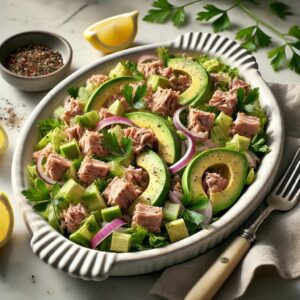

Health Food Illusion: Are We Drinking Liquid Sugar Disguised as Nutrition?


Arya Soleil
For years, we’ve been told that fruit juice is a healthy choice—a natural alternative to soda and a great way to get essential vitamins. But what if that “health food” is just another cleverly marketed sugar bomb? The harsh reality—apple juice, often labeled as a health-conscious choice, contains even more sugar per liter than Coca-Cola. This unsettling comparison raises an important question: Have we been misled about what constitutes healthy food?
The truth is, fruit juice and soda have more in common than we’d like to admit. Both flood the bloodstream with sugar, spike insulin levels, and contribute to metabolic dysfunction. But because one is labeled as “natural” and the other as “junk,” the average consumer sees them as opposites. It’s time to rethink what we consider healthy and expose the dangers of excessive sugar—whether it comes from a fruit or a can.
The Sugar Trap: Why Fruit Juice Is No Better Than Soda
At first glance, apple juice might seem like an obvious winner over soda. It’s natural, comes from fruit, and often boasts labels like “100% pure” or “no added sugar.” But here’s the problem: fruit juice is stripped of the very things that make whole fruit nutritious. It lacks fiber, slows down digestion, and delivers a concentrated hit of sugar straight into your bloodstream.
✔ Apple juice: 29 ¼ teaspoons of sugar per liter
✔ Coca-Cola: 26 ½ teaspoons of sugar per liter
Despite being sold as a health product, apple juice has even more sugar than soda. The problem isn’t just the amount—it’s the way your body processes it.
When you eat a whole apple, the fiber slows the absorption of sugar, preventing blood sugar spikes and promoting satiety. But when you drink apple juice, you consume the sugar without the fiber, leading to rapid spikes in blood glucose. The liver, overwhelmed with fructose, starts converting the excess into fat, increasing the risk of fatty liver disease and insulin resistance.
The Problem with Liquid Calories
One of the biggest issues with both juice and soda is that they don’t fill you up. Your body processes liquid calories differently from solid food, making it easy to overconsume without feeling full.
🔴 Juice lacks satiety: Unlike whole fruit, juice does little to curb hunger, often leading to overconsumption of both calories and sugar.
🔴 Blood sugar rollercoaster: A glass of juice causes a rapid spike in blood sugar, followed by a crash that leaves you craving more sugar.
🔴 Increased fat storage: Excess fructose is converted into fat in the liver, contributing to obesity, insulin resistance, and metabolic syndrome.
Many parents wouldn’t think twice about giving a child apple juice but would hesitate before handing them a can of Coke. Yet, metabolically, the effects are almost identical.
Fructose: The Silent Villain
One of the reasons fruit juice is so problematic is its high fructose content. While fructose is naturally found in fruit, consuming it in liquid form at high concentrations puts stress on the liver. Unlike glucose, which can be used for immediate energy, fructose is metabolized in the liver and stored as fat if consumed in excess.
🚨 Excess fructose is linked to:
✔ Non-alcoholic fatty liver disease (NAFLD)
✔ Increased triglycerides (raising heart disease risk)
✔ Insulin resistance and type 2 diabetes
✔ Increased appetite due to disrupted leptin signaling
Soda is often demonized for containing high-fructose corn syrup (HFCS), yet fruit juice contains just as much fructose, if not more. The body doesn’t distinguish between fructose from fruit juice or soda—it processes it the same way.
How Did Juice Get Marketed as a Health Food?
The rise of juice as a health product is largely a result of clever marketing, not science. In the early 20th century, orange juice was promoted as a way to prevent scurvy due to its vitamin C content. Over time, juice became synonymous with a “balanced breakfast” despite having little nutritional advantage over soda.
Food companies pushed juice as a convenient, nutritious option, ignoring the sugar content. Labels like “100% pure” and “no added sugar” make it sound healthier than it is, even though juice is essentially just liquid sugar with some vitamins thrown in.
Fruit vs. Juice: Why the Whole Fruit Wins Every Time
While juice should be limited, whole fruit is a different story. Here’s why eating an apple is better than drinking apple juice:
✔ Fiber slows sugar absorption: Whole fruit contains fiber, which slows digestion and prevents sugar spikes.
✔ More nutrients: Many beneficial compounds, such as antioxidants and polyphenols, are lost during juice processing.
✔ Increased satiety: Chewing and digesting whole fruit signals fullness, reducing overeating.
If you enjoy fruit, eat it whole. If you want hydration, drink water. But fruit juice? It’s best to avoid it entirely.
What Should You Drink Instead?
If fruit juice and soda are both problematic, what are the best alternatives? Here are some better beverage choices:
✔ Water: The best hydration source, free of calories and sugar.
✔ Herbal Tea: Naturally sugar-free and packed with antioxidants.
✔ Infused Water: Add lemon, cucumber, or mint for flavor without sugar.
✔ Electrolyte Water (without added sugar): Supports hydration and energy balance.
✔ Freshly Blended Smoothies: Whole fruits and vegetables retain fiber and nutrients, making them a better alternative.
If you’re craving something sweet, opt for a smoothie made with whole fruit, healthy fats (like avocado or coconut), and protein for balanced energy.
How to Reduce Your Sugar Intake
It’s not just fruit juice—sugar is everywhere. To take control of your health, start by reducing hidden sugar in your diet:
✔ Read labels carefully: Sugar hides under names like fructose, glucose, sucrose, and corn syrup.
✔ Cut out processed foods: Most packaged foods contain added sugars, even those labeled as “healthy.”
✔ Cook at home: Preparing your own meals lets you control ingredients and sugar content.
✔ Use natural sweeteners sparingly: Opt for raw honey or stevia in moderation.
✔ Train your taste buds: Over time, you can adjust to less sweetness and appreciate natural flavors.
Final Thoughts: Rethinking “Healthy” Drinks
The comparison between apple juice and Coca-Cola serves as a wake-up call—labels can be misleading, and not all “health foods” are actually good for you. Fruit juice, despite its wholesome image, is a sugar-laden beverage that offers little benefit over soda. It’s time to move past marketing gimmicks and focus on real nutrition.
The next time you reach for a glass of juice, ask yourself: Would I eat four apples in one sitting? If the answer is no, reconsider drinking their liquid equivalent. Sugar is sugar, regardless of whether it comes from a bottle of Coke or a carton of “100% pure” apple juice. Choose wisely, and your body will thank you.
Recommended Reads

- April 19, 2025
Food is Medicine: How Nature’s Produce Can Heal Your Body From the Inside Out
Home News Healthy Habits & Lifestyle Health Conditions &...


- April 17, 2025
If You Want to Change Your Life, Then Change These Habits First: 8 Foundational Shifts That Transform Health, Energy, and Mindset
Home News Healthy Habits & Lifestyle Health Conditions &...


- April 17, 2025
100 Foods That Last 10 Years (or More): Long Shelf Life Staples for Smart Storage and Food Security
Home News Healthy Habits & Lifestyle Health Conditions &...


- April 17, 2025
Bridge Pose (Setu Bandhasana): A Powerful, Simple Move With Big Benefits
Home News Healthy Habits & Lifestyle Health Conditions &...


- April 17, 2025
Diabetes Superfoods: The Best Foods to Balance Blood Sugar and Support Metabolic Health
Home News Healthy Habits & Lifestyle Health Conditions &...


- April 17, 2025
Herbs for Stress Relief: Natural Remedies to Soothe Your Nervous System and Restore Calm
Home News Healthy Habits & Lifestyle Health Conditions &...

Health Food Illusion: Are We Drinking Liquid Sugar Disguised as Nutrition?

For years, we’ve been told that fruit juice is a healthy choice—a natural alternative to soda and a great way to get essential vitamins. But what if that “health food” is just another cleverly marketed sugar bomb? The harsh reality—apple juice, often labeled as a health-conscious choice, contains even more sugar per liter than Coca-Cola. This unsettling comparison raises an important question: Have we been misled about what constitutes healthy food?
The truth is, fruit juice and soda have more in common than we’d like to admit. Both flood the bloodstream with sugar, spike insulin levels, and contribute to metabolic dysfunction. But because one is labeled as “natural” and the other as “junk,” the average consumer sees them as opposites. It’s time to rethink what we consider healthy and expose the dangers of excessive sugar—whether it comes from a fruit or a can.
The Sugar Trap: Why Fruit Juice Is No Better Than Soda
At first glance, apple juice might seem like an obvious winner over soda. It’s natural, comes from fruit, and often boasts labels like “100% pure” or “no added sugar.” But here’s the problem: fruit juice is stripped of the very things that make whole fruit nutritious. It lacks fiber, slows down digestion, and delivers a concentrated hit of sugar straight into your bloodstream.
✔ Apple juice: 29 ¼ teaspoons of sugar per liter
✔ Coca-Cola: 26 ½ teaspoons of sugar per liter
Despite being sold as a health product, apple juice has even more sugar than soda. The problem isn’t just the amount—it’s the way your body processes it.
When you eat a whole apple, the fiber slows the absorption of sugar, preventing blood sugar spikes and promoting satiety. But when you drink apple juice, you consume the sugar without the fiber, leading to rapid spikes in blood glucose. The liver, overwhelmed with fructose, starts converting the excess into fat, increasing the risk of fatty liver disease and insulin resistance.
The Problem with Liquid Calories
One of the biggest issues with both juice and soda is that they don’t fill you up. Your body processes liquid calories differently from solid food, making it easy to overconsume without feeling full.
🔴 Juice lacks satiety: Unlike whole fruit, juice does little to curb hunger, often leading to overconsumption of both calories and sugar.
🔴 Blood sugar rollercoaster: A glass of juice causes a rapid spike in blood sugar, followed by a crash that leaves you craving more sugar.
🔴 Increased fat storage: Excess fructose is converted into fat in the liver, contributing to obesity, insulin resistance, and metabolic syndrome.
Many parents wouldn’t think twice about giving a child apple juice but would hesitate before handing them a can of Coke. Yet, metabolically, the effects are almost identical.
Fructose: The Silent Villain
One of the reasons fruit juice is so problematic is its high fructose content. While fructose is naturally found in fruit, consuming it in liquid form at high concentrations puts stress on the liver. Unlike glucose, which can be used for immediate energy, fructose is metabolized in the liver and stored as fat if consumed in excess.
🚨 Excess fructose is linked to:
✔ Non-alcoholic fatty liver disease (NAFLD)
✔ Increased triglycerides (raising heart disease risk)
✔ Insulin resistance and type 2 diabetes
✔ Increased appetite due to disrupted leptin signaling
Soda is often demonized for containing high-fructose corn syrup (HFCS), yet fruit juice contains just as much fructose, if not more. The body doesn’t distinguish between fructose from fruit juice or soda—it processes it the same way.
How Did Juice Get Marketed as a Health Food?
The rise of juice as a health product is largely a result of clever marketing, not science. In the early 20th century, orange juice was promoted as a way to prevent scurvy due to its vitamin C content. Over time, juice became synonymous with a “balanced breakfast” despite having little nutritional advantage over soda.
Food companies pushed juice as a convenient, nutritious option, ignoring the sugar content. Labels like “100% pure” and “no added sugar” make it sound healthier than it is, even though juice is essentially just liquid sugar with some vitamins thrown in.
Fruit vs. Juice: Why the Whole Fruit Wins Every Time
While juice should be limited, whole fruit is a different story. Here’s why eating an apple is better than drinking apple juice:
✔ Fiber slows sugar absorption: Whole fruit contains fiber, which slows digestion and prevents sugar spikes.
✔ More nutrients: Many beneficial compounds, such as antioxidants and polyphenols, are lost during juice processing.
✔ Increased satiety: Chewing and digesting whole fruit signals fullness, reducing overeating.
If you enjoy fruit, eat it whole. If you want hydration, drink water. But fruit juice? It’s best to avoid it entirely.
What Should You Drink Instead?
If fruit juice and soda are both problematic, what are the best alternatives? Here are some better beverage choices:
✔ Water: The best hydration source, free of calories and sugar.
✔ Herbal Tea: Naturally sugar-free and packed with antioxidants.
✔ Infused Water: Add lemon, cucumber, or mint for flavor without sugar.
✔ Electrolyte Water (without added sugar): Supports hydration and energy balance.
✔ Freshly Blended Smoothies: Whole fruits and vegetables retain fiber and nutrients, making them a better alternative.
If you’re craving something sweet, opt for a smoothie made with whole fruit, healthy fats (like avocado or coconut), and protein for balanced energy.
How to Reduce Your Sugar Intake
It’s not just fruit juice—sugar is everywhere. To take control of your health, start by reducing hidden sugar in your diet:
✔ Read labels carefully: Sugar hides under names like fructose, glucose, sucrose, and corn syrup.
✔ Cut out processed foods: Most packaged foods contain added sugars, even those labeled as “healthy.”
✔ Cook at home: Preparing your own meals lets you control ingredients and sugar content.
✔ Use natural sweeteners sparingly: Opt for raw honey or stevia in moderation.
✔ Train your taste buds: Over time, you can adjust to less sweetness and appreciate natural flavors.
Final Thoughts: Rethinking “Healthy” Drinks
The comparison between apple juice and Coca-Cola serves as a wake-up call—labels can be misleading, and not all “health foods” are actually good for you. Fruit juice, despite its wholesome image, is a sugar-laden beverage that offers little benefit over soda. It’s time to move past marketing gimmicks and focus on real nutrition.
The next time you reach for a glass of juice, ask yourself: Would I eat four apples in one sitting? If the answer is no, reconsider drinking their liquid equivalent. Sugar is sugar, regardless of whether it comes from a bottle of Coke or a carton of “100% pure” apple juice. Choose wisely, and your body will thank you.
Recommended Reads

- April 19, 2025
Food is Medicine: How Nature’s Produce Can Heal Your Body From the Inside Out
Home News Healthy Habits & Lifestyle Health Conditions &...


- April 17, 2025
If You Want to Change Your Life, Then Change These Habits First: 8 Foundational Shifts That Transform Health, Energy, and Mindset
Home News Healthy Habits & Lifestyle Health Conditions &...


- April 17, 2025
100 Foods That Last 10 Years (or More): Long Shelf Life Staples for Smart Storage and Food Security
Home News Healthy Habits & Lifestyle Health Conditions &...


- April 17, 2025
Bridge Pose (Setu Bandhasana): A Powerful, Simple Move With Big Benefits
Home News Healthy Habits & Lifestyle Health Conditions &...


- April 17, 2025
Diabetes Superfoods: The Best Foods to Balance Blood Sugar and Support Metabolic Health
Home News Healthy Habits & Lifestyle Health Conditions &...


- April 17, 2025
Herbs for Stress Relief: Natural Remedies to Soothe Your Nervous System and Restore Calm
Home News Healthy Habits & Lifestyle Health Conditions &...



